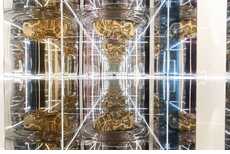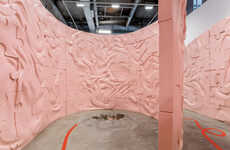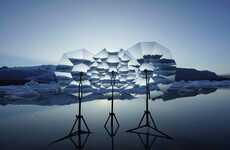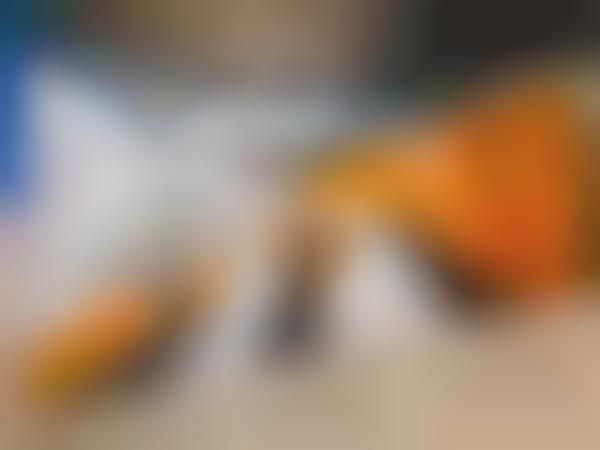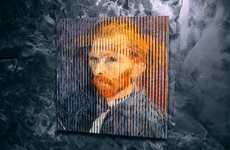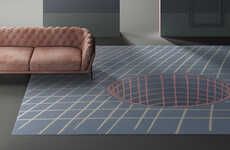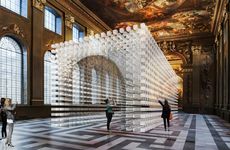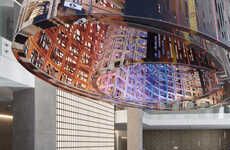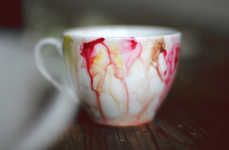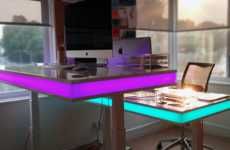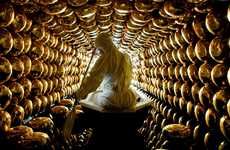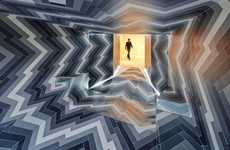
The Trillusion Installation by Boris Banozic is Visually Intriguing
Jana Pijak — May 19, 2012 — Art & Design
The Trillusion Installation by Boris Banozic tests one's visual boundaries. Students from the University of Applied Sciences Darmstadt have created this striking structural piece under the direction of the architect.
Displayed at Milan design week's SaloneSatellite, the interactive art piece explores the marriage between furniture and space. The memorable structure is brightly painted and features a series of graphically geometric elements that question whether furniture defines space or is an extension of it.
A bench, table and desk are fused into the structure, appearing to extend further into it with help from optically deceptive forms. The Trillusion Installation by Boris Banozic blurs the boundaries of perception, offering visitors angle distortions, sharp spatial forms and other visually vivid design elements.
Displayed at Milan design week's SaloneSatellite, the interactive art piece explores the marriage between furniture and space. The memorable structure is brightly painted and features a series of graphically geometric elements that question whether furniture defines space or is an extension of it.
A bench, table and desk are fused into the structure, appearing to extend further into it with help from optically deceptive forms. The Trillusion Installation by Boris Banozic blurs the boundaries of perception, offering visitors angle distortions, sharp spatial forms and other visually vivid design elements.
Trend Themes
1. Optical Illusion Art - The Trillusion Installation by Boris Banozic showcases the trend of integrating optical illusions into art installations, creating visually captivating experiences.
2. Interactive Furniture - The combination of furniture and space in the Trillusion Installation highlights the trend of interactive furniture that blurs the line between function and aesthetics.
3. Spatial Perception - The Trillusion Installation challenges traditional ideas of spatial perception by using deceptive forms and geometric elements, reflecting the trend of exploring human perception through design.
Industry Implications
1. Art and Design - Artists and designers can incorporate optical illusions into their creations, sparking innovative and visually engaging experiences for viewers.
2. Furniture Manufacturing - Furniture manufacturers can explore the concept of interactive furniture to offer customers unique and multifunctional pieces that enhance both the aesthetics and functionality of spaces.
3. Architecture and Interior Design - Architects and interior designers can adopt the use of deceptive forms and spatial manipulation techniques to create immersive environments that challenge visitors' perception and enhance the overall experience.
4.3
Score
Popularity
Activity
Freshness


